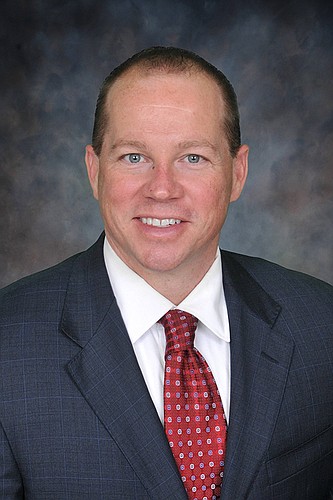- November 25, 2024
-
-
Loading

Loading

RICK NARKIEWICZ
Senior Managing Director
Newmark Grubb Knight Frank, Tampa
Rick Narkiewicz joined commercial real estate brokerage firm Newmark Grubb Knight Frank at the end of last year, after spending nearly 18 years at rival CBRE Inc., the world's largest commercial real estate services firm. An industrial specialist who focuses on the Hillsborough and surrounding submarkets, Narkiewicz is now working to boost Newmark Grubb's listings in the Tampa and Interstate 4 corridor areas. To that end, the firm was recently awarded the leasing assignment for Grand Oaks 75, a new, speculative industrial project slated to measure 169,000 square feet.
Growth in Tampa's commercial real estate market is showing few signs of waning across its various sectors. Do you see any external factors that could dent or derail the progress?
I don't see anything on the horizon, frankly. Tampa's industrial market, in particular, has been vibrant, and developers haven't introduced much new product, which has kept vacancies low and rental rates up. The flip side to that is, the weakness in the market, if you want to call it that, is there's such a lack of supply that deals aren't getting done because there's literally no space to go to.
The only other concern is construction costs, which have continued to rise amid demand. But the main concern is the land-constrained market; there are only a handful of sites around Tampa Bay that can accommodate new development.
With all the new development in the area, do you think Tampa has the infrastructure necessary to support all of the planned growth?
It's not a problem today, but it will be if it's not addressed. My specialty, industrial space, does not create the kind of traffic that an office building does. But in the urban areas, especially, we need public transportation, there's no doubt about it.
If you look at the data, our commutes in the Tampa area are among the lowest in time in the country. No one likes to sit in traffic, but we actually have very good road systems here. And the market has taken corrective steps already. A lot of distributors, for instance, won't locate near Tampa International Airport because of concerns with congestion, and in Pinellas County, many distributors won't go around the 301 and I-75 corridor for the same reason.
The industrial market in the I-4 corridor, in particular, has been extremely hot over the past three to four years, but now some analysts contend new development will occur closer to urban areas. What do you think?
I think it's going to be a mix of traditional development in areas like the I-4 corridor and in projects closer to urban cores, especially as more and more firms compete to execute same-day and one-day deliveries. It's going to really depend on the individual company. Some will continue to go big box, while others will shift to a more infill approach. It's going to depend on business strategy.
How does this cycle differ from the growth period of a decade ago?
From an industrial real estate perspective, this cycle looks very similar to the one a decade ago. There's been a responsible level of building, vs. overbuilding. We've had good access to capital, but it's been smart money. Today, new buildings have more bells and whistles attached to them. There's better fire suppression technology in place now, and most buildings are 30-foot clear height. Last cycle, cutting edge was 28-foot clear.
Logistics companies are using narrow guided systems now to pick products off higher racks and to gain efficiency. We've evolved into a more sophisticated distribution market. Look at Amazon, their new building in Ruskin. They're a great example of what's happening. They're very sophisticated, and I think you're going to see that in smaller operations going forward.